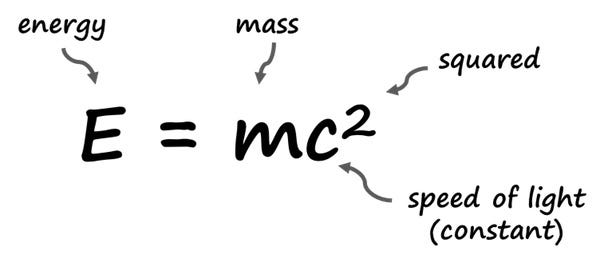The Tube of Time
Life, death, and resurrection from both the eternal and temporal perspectives.
James 4:13-15
Come now, you who say, “Today or tomorrow we will go into such and such a town and spend a year there and trade and make a profit”—yet you do not know what tomorrow will bring. What is your life? For you are a mist that appears for a little time and then vanishes. Instead you ought to say, “If the Lord wills, we will live and do this or that.
We are creatures of time.
We plan for the future, reflect on the past, and live in the present.
What if the Creator created time for us, and what if there’s a beginning and ending to time?
What if one could live ‘outside of time’ (in eternity) and, from eternity, actually enter the tube of time at different places on the spectrum of time at the will of the Creator?
‘Show love to strangers: for some have entertained Divine messengers unaware.’ - Hebrews 13:2
Does a Tube of Time Sound Ridiculous?
It may not be as wild a thought as you might initially think.
A scientist named Albert Einstein (1879-1955) thought about time, space, and eternity in entirely different ways than his predecessors.
All except for Spirit-inspired biblical writers (as we shall see).
Albert Einstein wasn't as big a genius as many believe. But he had an inquisitive mind. He thought about things that others rarely considered. Einstein took time to imagine.
Most of all, Einstein wasn't afraid to think differently about things others firmly believed.
As an example, Einstein began imagining a person flying in space at the speed of Light (e.g., Superman). Einstein asked himself a question:
"If a man flew at the speed of light with his arm fully outstretched and his hand holding a mirror in front of his face, would the flying person be able to see himself in the mirror?"
Does that seem like a strange question?
Not to Einstein's curious mind.
It was a difficult question to answer because the hypothetical flying man would be flying at the speed of light. So, what about the speed of light traveling from the man's eye to the mirror and back? How does the man's flying speed alter the speed of the light bouncing between the man's pupil and the mirror? Would the flying man be able to see himself flying?
From 1895 to 1905, Einstein imagined possible answers to his hypothetical question.
Einstein used his mind, not a laboratory, or even better, his mind became his laboratory.
Einstein considered whether the man would be able to see anything, given that he was flying at the speed of light, the same speed as the light traveling from the man's pupil to the mirror. He also considered whether the man's flying speed changes the speed of Light coming toward his eye from the mirror and distorts the image?
Einstein pondered whether a man would see his face bigger or smaller than it was.
Einstein reflected in his mind on what observers on the ground would see or not see looking at the flying man at the speed of light.
A Famous Formula
After a decade of thought, Einstein concluded that the speed of light was constant.
In other words, Einstein speculated that the speed of Light remains constant, regardless of the observer's movement toward or away from the source of Light.
Out popped Einstein's famous formula: E = mc².
Until Einstein's time, everyone believed that time and distance were constants, but the speed of Light, like the speed of everything else in the universe, people deemed variable.
Einstein was willing to think about the speed of light in ways different than everyone else.
After assuming that the speed of light was constant, Einstein returned to the mathematical and electromagnetic equations that had already been worked out years before and plugged in the letter "C" (a constant) to represent the fixed speed of light (whatever it might be), and out came the formula E=mc².
Here’s Where It Gets Crazy
IF light’s speed is constant, Einstein knew from math that time and distance had to be relative.
That means time and distance are not fixed.
Hypothetically, someone could advance in time, go back in time, or travel long distances by manipulating time.
That seemed crazy and unscientific, and it was! Einstein thought it rather than proved it.
However, in 1905, Einstein published his theoretical formula in a three-page paper entitled Does The Inertia Of A Body Depend On Its Energy Content?"
Einstein’s paper had no footnotes and not one single reference to support it.
The scientific establishment went nuts. Einstein, they said, was insane.
Twenty years later, when technology had advanced sufficiently for science to prove or disprove Einstein's theory of relativity, science proved that Einstein's guess was correct.
The speed of light is constant.
Time and distance are relative.
I'll put this in another way that is consistent with Scripture's teachings.
Keep reading with a 7-day free trial
Subscribe to Wade Burleson at Istoria to keep reading this post and get 7 days of free access to the full post archives.










